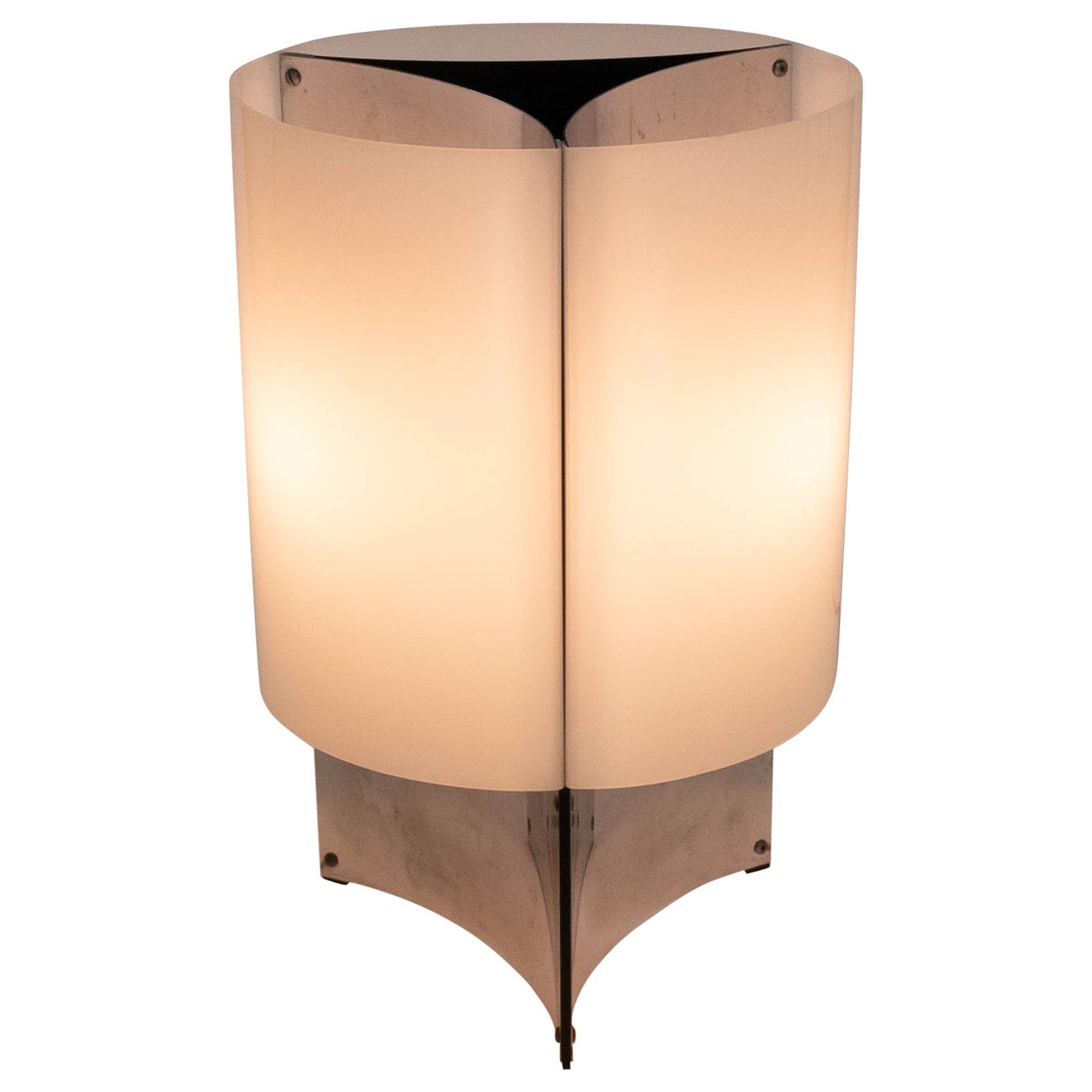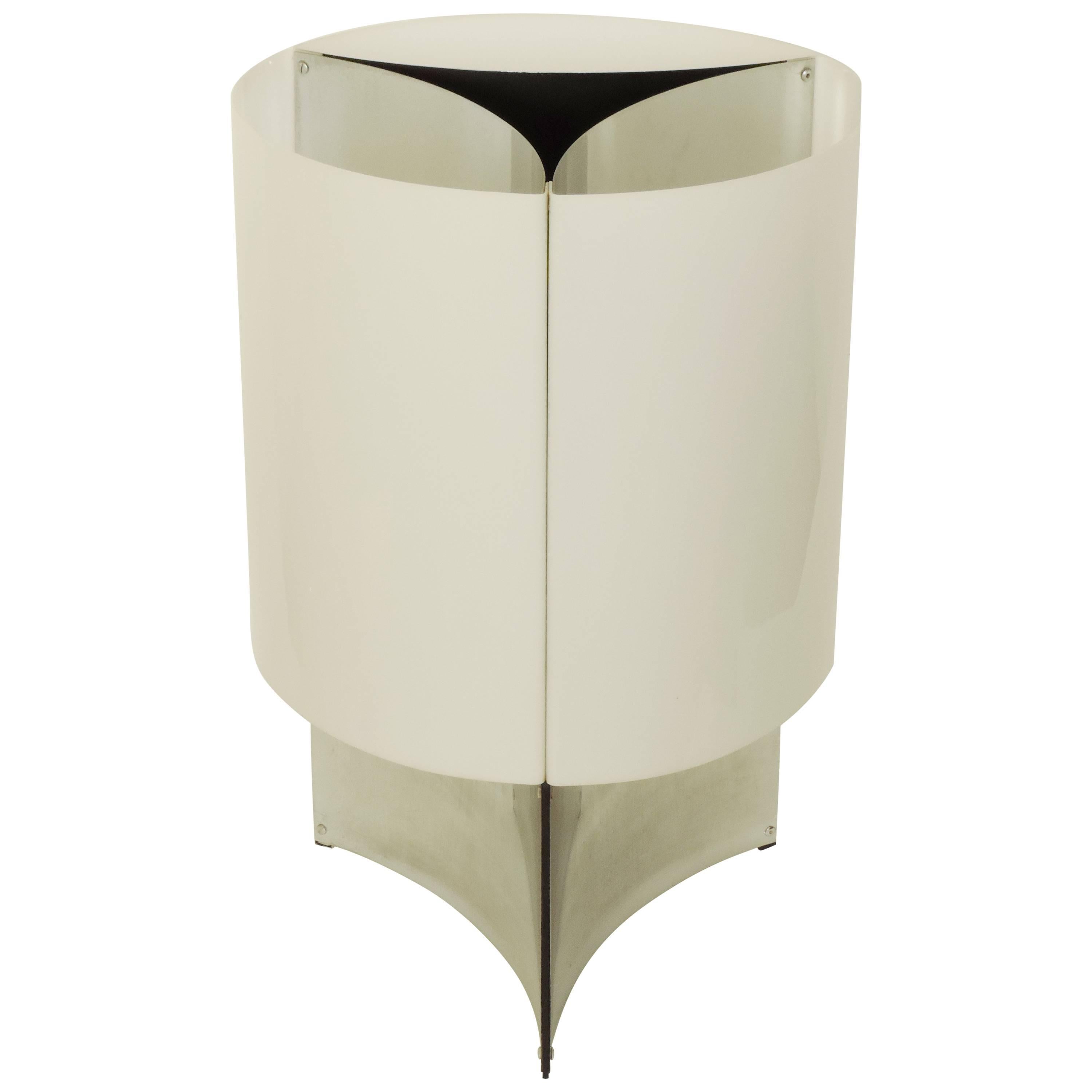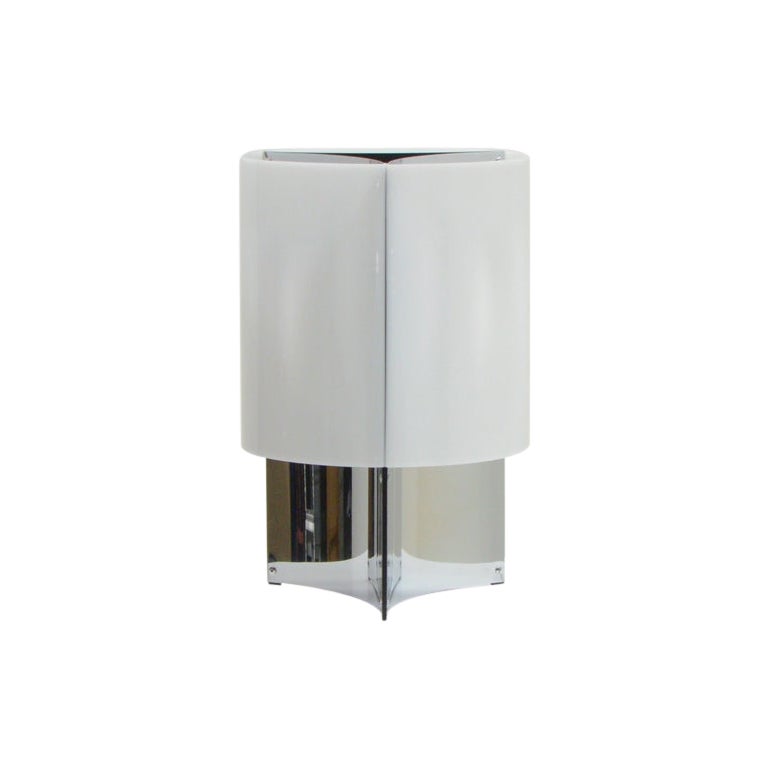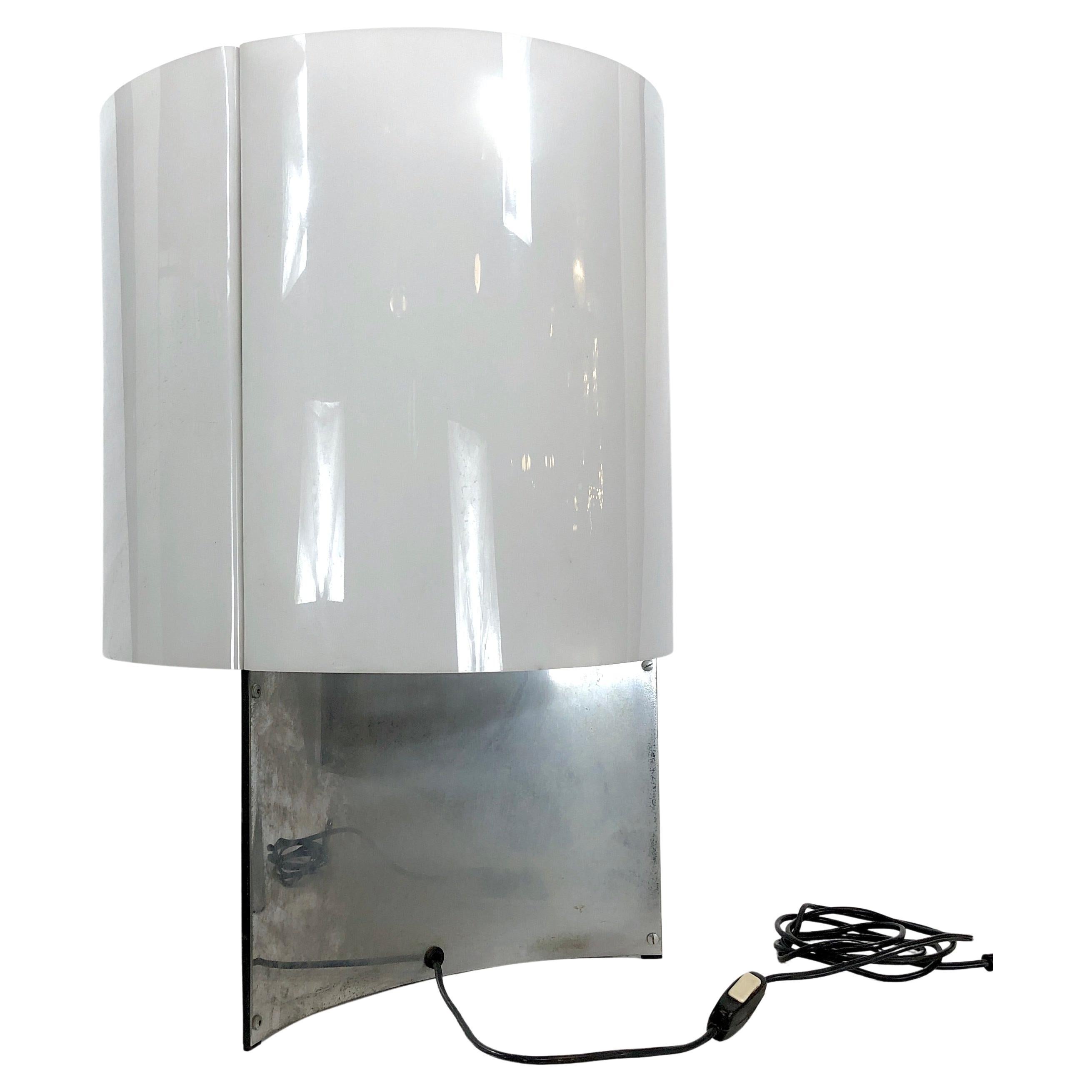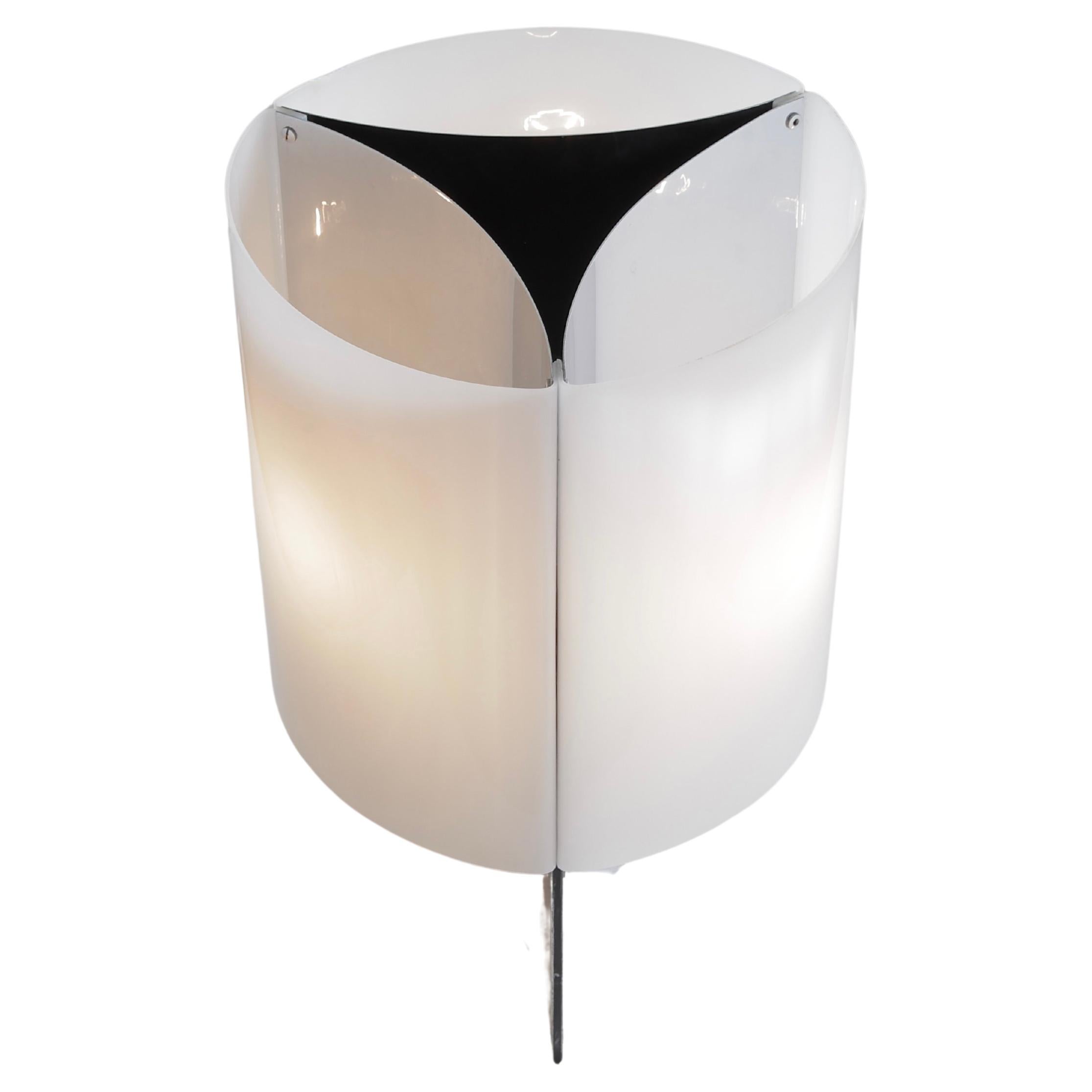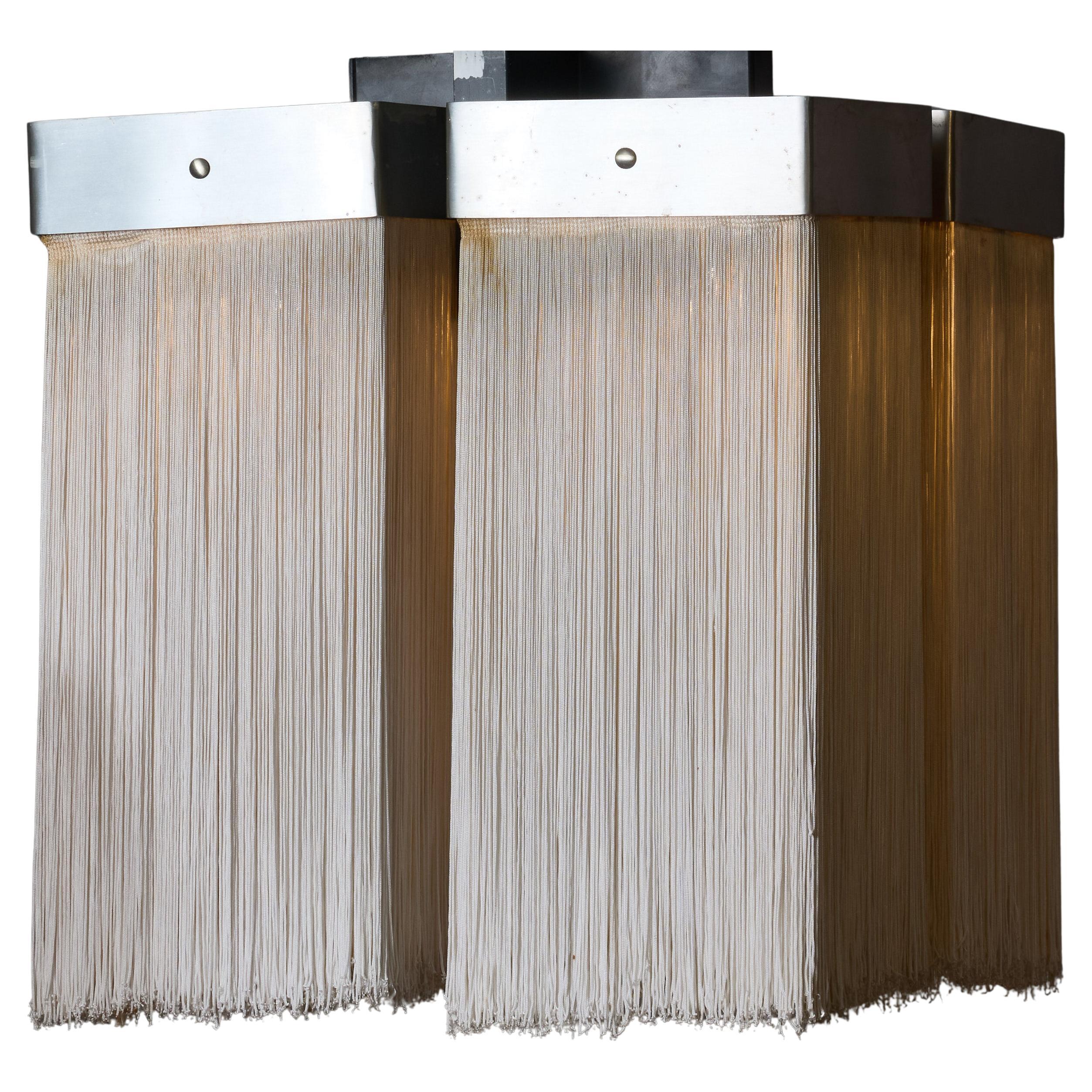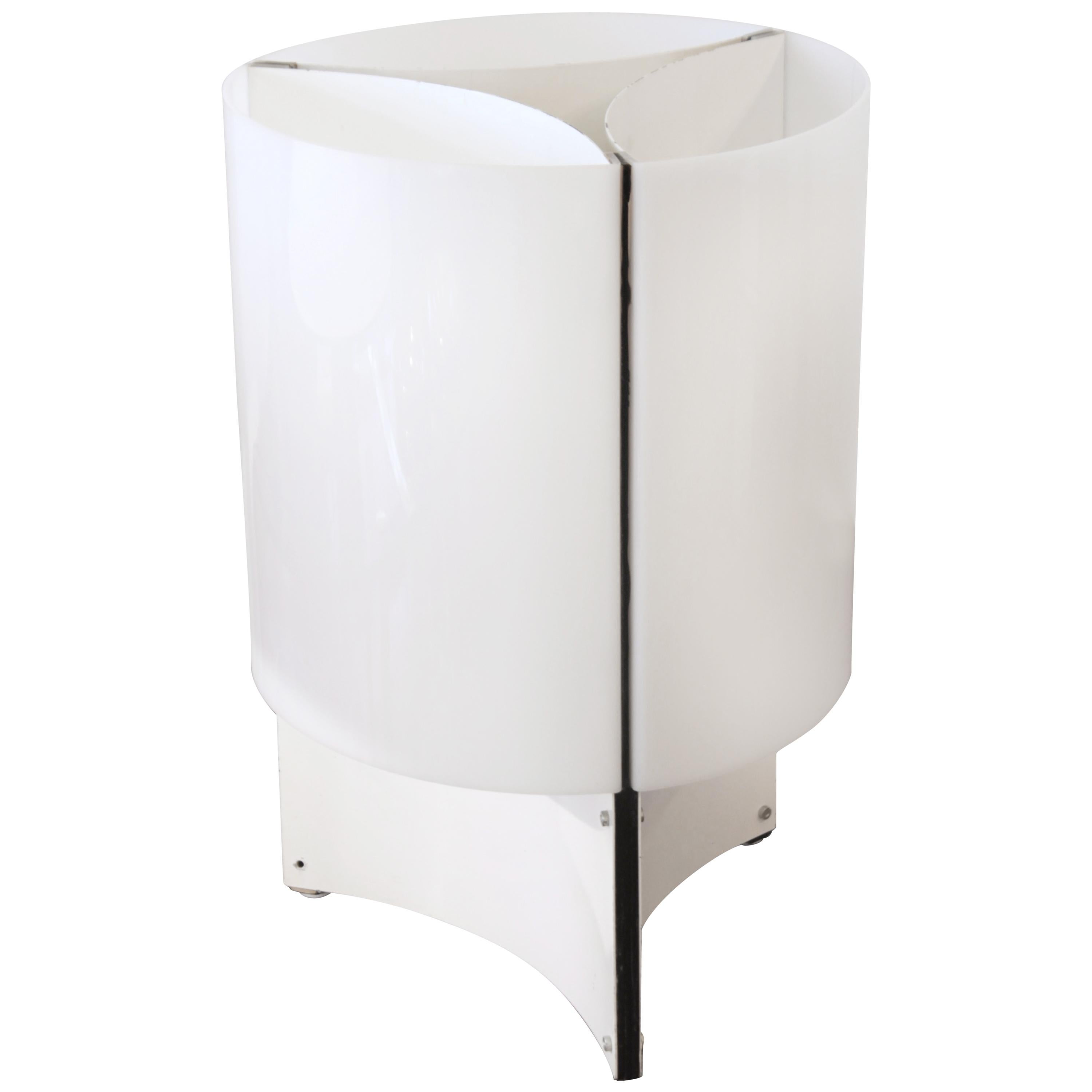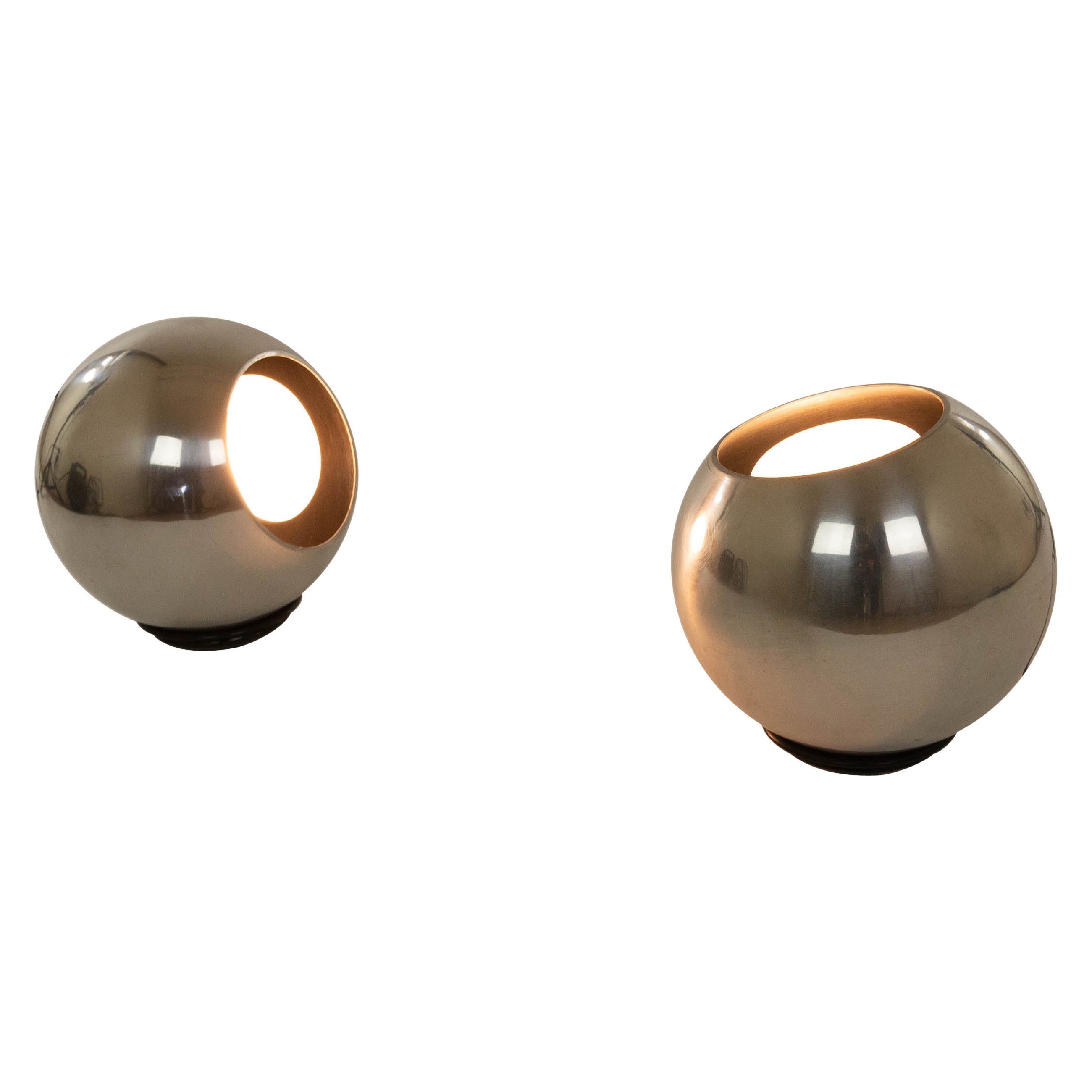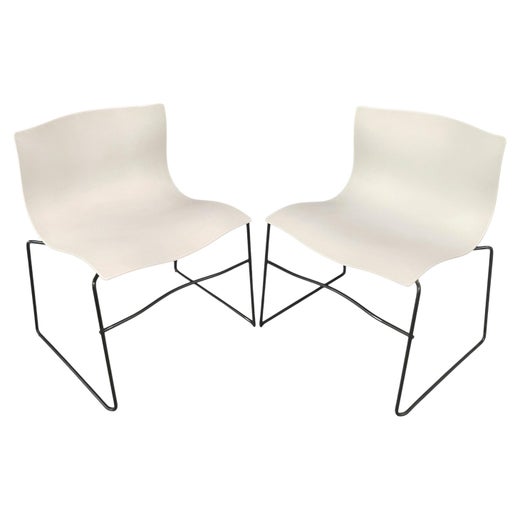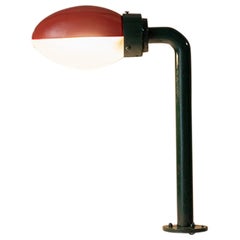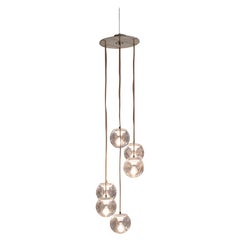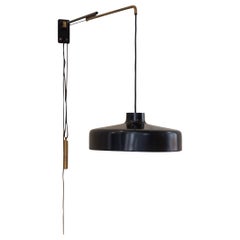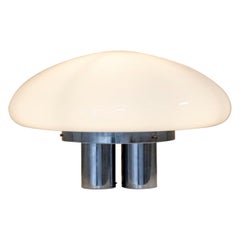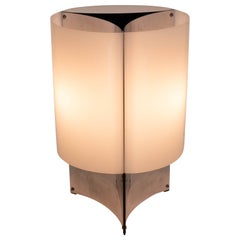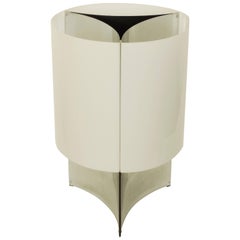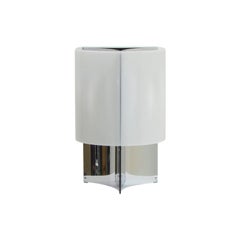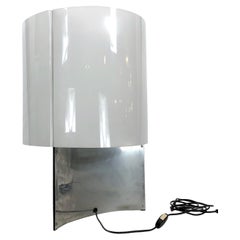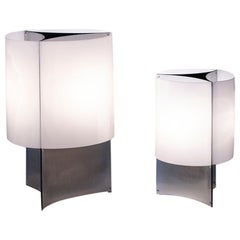
Midcentury pair of lamps 526 model G and P by Massimo Vignelli for Arteluce
View Similar Items
Midcentury pair of lamps 526 model G and P by Massimo Vignelli for Arteluce
About the Item
- Creator:Massimo Vignelli (Designer),Arteluce (Manufacturer)
- Dimensions:Height: 23.82 in (60.5 cm)Diameter: 18.9 in (48 cm)
- Sold As:Set of 2
- Style:Mid-Century Modern (Of the Period)
- Materials and Techniques:
- Place of Origin:
- Period:
- Date of Manufacture:1960s
- Condition:Wear consistent with age and use.
- Seller Location:Piacenza, IT
- Reference Number:1stDibs: LU1031640682332
Massimo Vignelli
Massimo Vignelli and Lella Vignelli are legendary names in branding and were prolific creators of home furnishings, products and interiors. The duo’s modernist furniture collaborations, which span 50 years, have also left a profound mark on design and wider visual culture. Furniture created by the couple is often labeled as Massimo Vignelli’s alone, though he fought to have Lella recognized for her work, even throwing away magazines that neglected to give her due credit.
As Massimo wrote of their lifelong collaboration in his book Designed By: Lella Vignelli: “It is not holding a pencil with four hands that makes a partnership; it is sharing the creative act and exercising creative criticism which is reflected in the end result.”
After meeting in Italy, Lella (1934–2016) and Massimo began working together in 1961 and a decade later formed Vignelli Associates in New York. A self-described “information architect,” Massimo was committed to streamlining complex ideas into clear, visually arresting forms. (Witness the graphic identity that he cocreated with Bob Noorda for the New York City Transit Authority as well as his influential 1972 subway map.) The Vignellis’ most recognizable piece, for example, may be the Handkerchief chair, a stackable office chair made of compression-molded plastic that has the look of a cloth floating in air. It was created for Knoll in 1983 after they designed the brand’s logo.
Evidence of the couple’s influence can also be found in their Saratoga line (1964), the first collection of lacquered furniture, which helped herald in the trendy “glossy” look of the decade (and beyond). When the Vignellis created the Poltrona Frau Interview chair in 1988 for an Italian television station, it became widely sought after, “which goes to show you the power of the TV media,” the couple once said. Much like their elemental graphic designs, the Kono (1984) and Pisa tables (1985) — both created for Casigliani — cull the form of the table down to geometric shapes.
Many of the Vignellis’ designs are considered modern masterpieces and are included in the collection of the Museum of Modern Art in New York and other important institutions.
Find vintage Massimo Vignelli furniture today on 1stDibs.
Arteluce
The lighting maker Arteluce was one of the companies at the heart of the creative explosion in postwar Italian design. The firm’s founder and guiding spirit, Gino Sarfatti (1912–85), was an incessant technical and stylistic innovator who almost single-handedly reinvented the chandelier as a modernist lighting form.
Sarfatti attended the University of Genoa to study aeronautical engineering but was forced to drop out when his father’s company went out of business. His mechanical instincts led him to turn his attention to lighting design — and he founded Arteluce as a small workshop in Milan in 1939. Sarfatti’s father was a Jew, so the family fled to Switzerland in 1943, but after the war — largely thanks to Sarfatti’s insistence on efficiency of design and manufacture — Arteluce quickly established itself as a top firm.
Though Sarfatti continued as chief designer through the 1950s and ’60s, he also enlisted other designers such as Franco Albini and Massimo Vignelli to contribute work. Sarfatti sold Arteluce to FLOS — a rival Italian lighting maker — in 1973 and retired to pursue a more traditional avocation: collecting and dealing rare postage stamps.
Sarfatti is regarded by many collectors as a pioneer of minimalist design. He pared down his lighting works to their essentials, focusing on practical aspects such as flexibility of use. His most famous light, the 2097 chandelier, is a brilliant example of reductive modernist design, featuring a central cylinder from which branches numerous supporting fixtures extending like spokes on a wheel.
Similarly, Sarfatti's 566 table lamp is a simple canister, able to be raised or lowered on a stem, holding a half-chrome bulb. Despite the marked functionality of his designs, Sarfatti did have a sprightly side: His 534 table lamp, with its cluster of rounded enameled shades, resembles a vase full of flowers, the Sputnik chandelier (model 2003) was inspired by fireworks and the brightly colored plastic disks of the 2072 chandelier look like lollipops. No matter the style, Sarfatti concentrated first and foremost on the character of light created — and any Arteluce lamp is a modernist masterpiece.
Find vintage Arteluce table lamps, chandeliers, floor lamps and other lighting on 1stDibs.
More From This Seller
View AllVintage 1960s Italian Mid-Century Modern Floor Lamps
Metal
Vintage 1960s Italian Mid-Century Modern Chandeliers and Pendants
Glass
Vintage 1950s Italian Mid-Century Modern Wall Lights and Sconces
Aluminum, Brass
Vintage 1970s Italian Mid-Century Modern Table Lamps
Chrome
Vintage 1960s Swedish Mid-Century Modern Table Lamps
Brass
Vintage 1960s Italian Table Lamps
Metal
You May Also Like
Vintage 1960s Italian Mid-Century Modern Table Lamps
Metal
Vintage 1960s Italian Modern Table Lamps
Metal
Vintage 1960s Italian Mid-Century Modern Table Lamps
Metal, Chrome
Mid-20th Century Italian Mid-Century Modern Table Lamps
Brass, Chrome
Vintage 1960s Italian Modern Table Lamps
Metal
Mid-20th Century Italian Space Age Table Lamps
Chrome
Recently Viewed
View AllRead More
The Italian Husband-and-Wife Duo Who Redefined Design in America
For six decades, the multidisciplinary New York City studio of Massimo and Lella Vignelli produced some of the most powerful visual expressions of our age, from graphics to jewelry to furniture.
Paloma Elsesser’s Home Features This Ettore Sottsass Table
The Italian designer’s oeuvre extends beyond the iconic Ultrafragola mirror.
